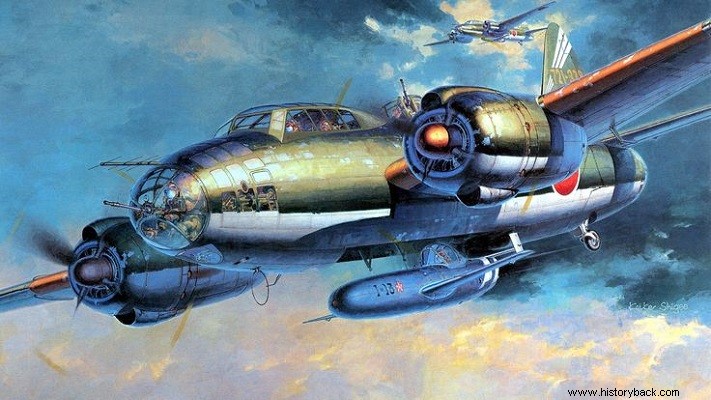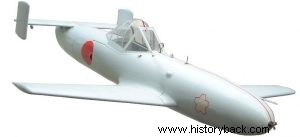
The Yokosuka MXY7 Oka (cherry blossom) was the Japanese flying bomb. However, unlike the German V1 Oka, it was headed towards the target by a kamikaze pilot. The Oka first flew in November 1944. It entered service in early 1945 and a total of 852 were built.
It developed a maximum speed of 648 km per hour in level flight. The maximum speed when submerged could reach up to 900 km per hour. The bomb carried a warhead weighing 1,200 kg and had a range of only 37 km. It was transported to the target in the "belly" of bombers.
Their first operational use occurred in Okinawa. On April 1, 1945 six Japanese Mitsubishi G4M "Betty" bombers took off loaded with Oka flying bombs and aimed at the American landing fleet.
Japanese aircraft attacked but only one Oka was considered to have hit a target by hitting a 16in gun turret. of the battleship "West Virginia." Actually Oka crashed near the battleship. Three US transports were also hit but it is not known whether they were hit by Oka or kamikaze aircraft. However, none of the "Bettys" returned.
The Americans realized the danger and developed a new tactic with their fighters beyond the range of the Oka, so as to shoot down the carrier aircraft before they dropped the flying bombs. On April 9, however, the Japanese tried again. This time nine Bettys attacked.
An Oka passed and hit the destroyer USS Abele which broke in two and sank immediately. An Oka exploded in the air within 50 m of an American landing craft from anti-aircraft fire. Nevertheless, the explosion caused damage to the ship. Two Okas were fired against the destroyer USS Stanly. One penetrated the ship without exploding and exploded in the sea.
The other fell too close to the boat. A single Japanese bomber escaped. On April 14 seven Bettys attacked. All seven were shot down before they could leave the Okas they were carrying. On April 16 six Bettys appeared. Four were shot down, but none of the bombs they dropped hit the target. On 28 April four Bettys carried out a night attack. Only one returned, but no American ships were hit.
On 4 May the Japanese attacked again with seven Bettys. An Oka hit the bridge of the minesweeper USS Shea causing heavy damage and loss. Also hit was the corvette USS Gayety by an Oka detonated nearby. The destroyer USS Hadley, however, was not so lucky and was seriously damaged beyond repair.
On May 25th the Japanese launched their biggest attack with 11 Bettys. But due to bad weather they returned to their bases without action. On 22 June six Bettys made the final attack with Oka. But no American ships were hit and four bombers were shot down. The secret Japanese weapon had completely failed to achieve serious results mainly due to the flexibility of the Americans and the change in defensive tactics.

